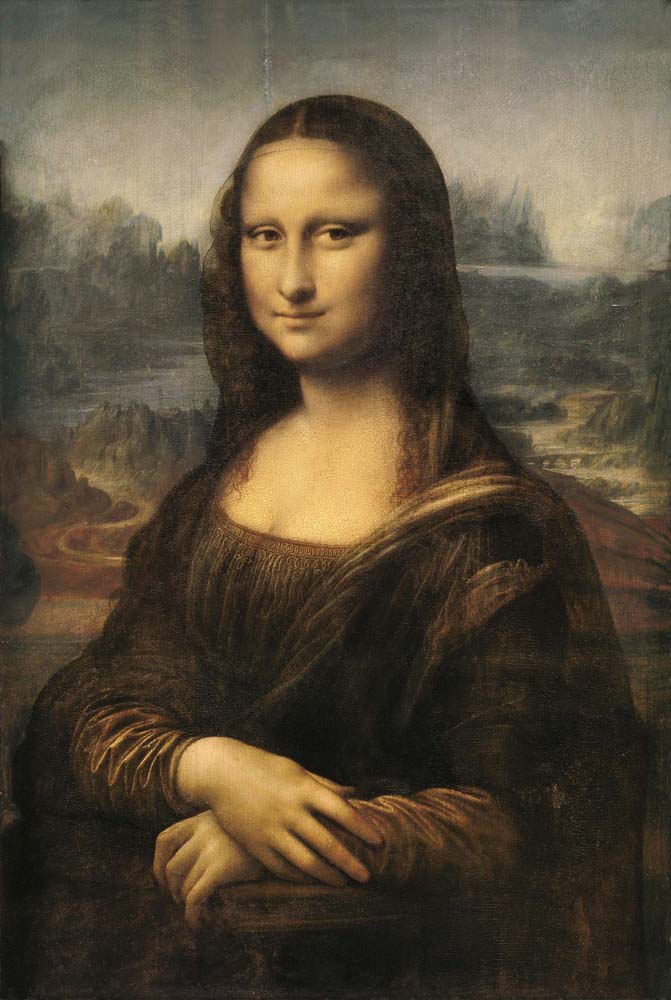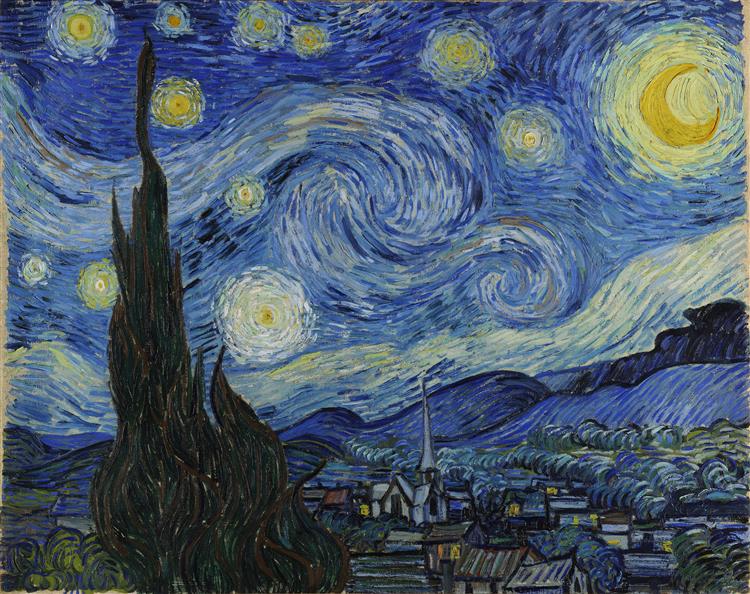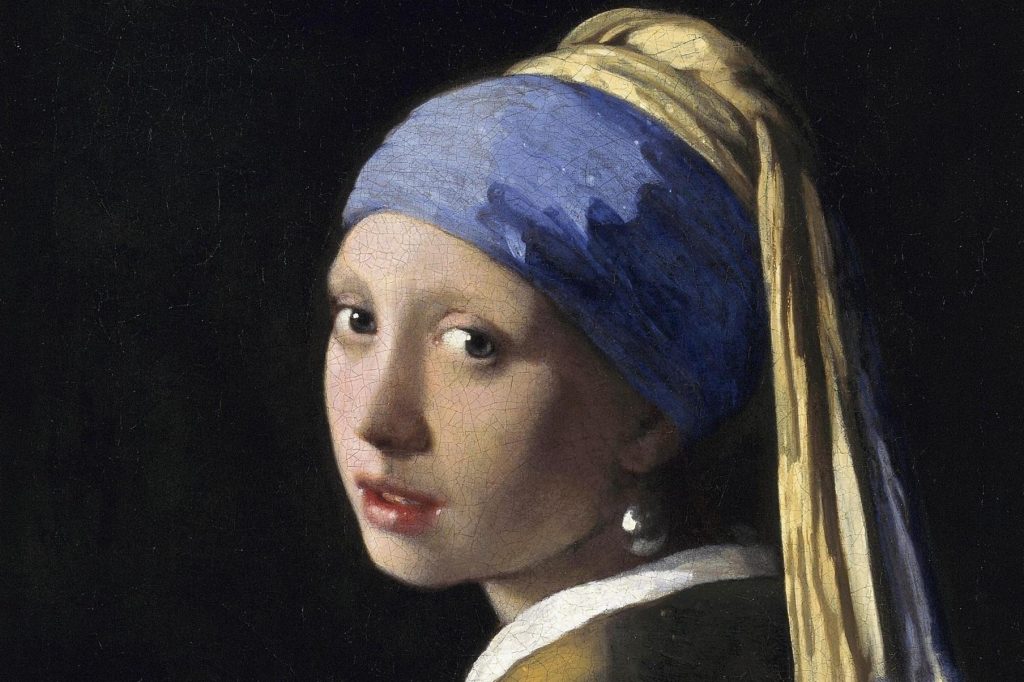The world of fine art is filled with iconic, timeless masterpieces that have left a lasting impression on the collective imagination. From Michelangelo’s Sistine Chapel ceiling to Van Gogh’s Starry Night, these works of art have come to symbolise beauty and creativity for generations. These masterpieces also represent the responses and interpretations of individuals to political, religious and social events and stories throughout history, giving us an insight into the human experience.
The most famous paintings in the world come from a variety of art movements. From early Renaissance masterpieces to contemporary abstract art. Each of these works of art has been carefully chosen for its outstanding aesthetic quality, composition, and impact on the history of art. Here are 12 of the most famous paintings in the world.
Mona Lisa by Leonardo da Vinci

Leonardo da Vinci’s Mona Lisa is an iconic painting. It was created between 1503 and 1506 during the Italian Renaissance period, more specifically, during the High Renaissance. The painting was created using oil on poplar wood and is known for its subtle transitions and blended edges. The painting also represents the style and techniques that Leonardo da Vinci perfected. This includes his use of chiaroscuro, which creates an intense contrast between light and shadow. Another technique da Vinci uses is sfumato which uses blending to create soft edges and a ‘smokey’ appearance.
The Mona Lisa is famously known for being stolen from the Louvre in 1911. This sparked a massive manhunt and outrage worldwide. It was recovered two years later and returned to the Louvre, where it remains on display today, heavily secured. The enigmatic smile of the Mona Lisa is one of the main reasons why the painting became so famous. It has an everlasting allure that has captured the fascination of art lovers.
Da Vinci was a master of observation. It was during the Renaissance period that artists began using techniques to achieve a realistic sense of perspective. The Mona Lisa is an early example of the use of atmospheric perspective to make it appear as if the distant mountains are receding into the fog.
The influence of the Mona Lisa in the art world can be seen in its many reproductions and imitations. From various forms of media to pop culture references, the painting has been a source of inspiration as well as a critical symbol of the Italian Renaissance. Its enigmatic expression and the wealth of techniques and styles used in its creation make it both fascinating and historically significant in the art world.
The Last Supper by Leonardo da Vinci

Another of the most famous Renaissance paintings by Leonardo da Vinci, is The Last Supper. The painting depicts the scene of the Last Supper, where Jesus Christ and his disciples are sharing a meal. It is a fresco painting, painted between 1495 and 1498 made using tempera and oil on a painted plaster base.
The painting is currently located in the Convent of Santa Maria delle Grazie in Milan, Italy. The piece was commissioned by Duke Ludovico Sforza of Milan, one of Leonardo’s most significant patrons.
Leonardo utilised many artistic techniques and styles to create the painting. The composition itself is a remarkable example of perspective, crafted to give the viewer the illusion of space and depth. The painting’s figures are vividly depicted. Jesus is the focal point of the painting, positioned in the centre, surrounded by the light from the window, which brings contrast to his figure. His brightly coloured robes stand out from the disciples.
The painting’s notoriety is in part due to the strong historical and cultural significance that it holds. The Last Supper is a significant representation of the Christian faith, depicting a key moment in the life of Jesus Christ. The painting’s fame has also been aided by its popularity in various forms of popular media over the years.
Scholars have offered several interpretations and analyses of the painting, ranging from its subtle symbolism to the painting’s portrayal of Jesus’ announcement that one of the disciples would betray him.
Today, the painting remains on display, though in low lighting conditions to preserve the artwork. Overall, The Last Supper is a truly remarkable feat of art that has captivated and inspired audiences for centuries, with its cultural, historical and artistic significance leaving an indelible impression on the art world.
The Starry Night by Vincent van Gogh

The Starry Night was painted by Vincent van Gogh in 1889 while he was staying at an asylum in Saint-Rémy-de-Provence, France. The painting is a nocturne of a starry night sky over a village with rolling hills dotted with trees and houses.
This painting is often cited as one of the most influential works of art of all time and was a core catalyst for the abstract and expressive nature that came out of the Post-Impressionist movement.
The painting is a study in movement, conveying the sensation of life through its vibrant hues and evocative impasto brushwork. It captures an atmosphere that immediately draws viewers into its vastness. Even though van Gogh had spent most of his life struggling to make a living from art, this piece has become a symbol of his genius and courage.
The Starry Night is an extraordinary example of how art can be used to communicate powerful emotion, as well as intricate technical skill. He used a complementary colour scheme, with the purples and yellows providing a stark colour contrast. It demonstrates the captivating power of van Gogh’s use of colour and composition, inviting viewers on a journey into the beauty of the night sky.
The Scream by Edvard Munch

The Scream is a renowned expressionist painting created by Edvard Munch in 1893. It has become one of the most recognisable paintings ever created.
The painting depicts an image of a figure standing beside a rail on a bridge. Their hands are clasped against their face as they scream in anguish. This image has become a symbol of human suffering. With the painting’s desperate, emotive colours transmitting the intensity of despair felt by its subject.
In addition to this symbolic meaning, many art historians have suggested that The Scream is an exploration of the artist’s inner turmoil and his own personal feelings of anxiety. Munch painted an intense red sky and used an unnatural colour palette to convey a sense of unease and fear. It is an example of expressionism, which was a movement that took place in the late 19th Century.
The Scream has also been interpreted as a reflection on contemporary society’s struggles with modernity, loneliness, illness and death. It is an evocative and chilling piece of art that has captured the imagination of millions, making it one of the most influential works in modern art.
The Persistence of Memory by Salvador Dali
Salvador Dalí was a surrealist painter from Figueres in Spain. The Persistence of Memory is his most famous artworks, which he created with oil on canvas in 1931. The painting is considered to be a Surrealist masterpiece. Its strange and dreamlike imagery providing plenty of scope for interpretation.
The melting clocks in a dream landscape represent the idea that time is relative and fleeting. It has been seen as a commentary on mortality and life’s impermanence, capturing the feeling of life’s fragility.
The Persistence of Memory is said to make reference to the Scientific developments of the time, to the inception of the Theory of Relativity. Art historians also suggest that Sigmund Freud had a large influence of Dalí, with the dreamy landscape reflecting Freud’s ‘The Interpretation of Dreams’.
The Persistence of Memory serves as a reminder that creativity can transcend boundaries and create ideas that last forever. Its unsettling combination of dreamlike imagery and realism remains as captivating today as it was when it was first unveiled.
The Night Watch by Rembrandt van Rijn

This painting is considered to be one of the most important Dutch Golden Age and Baroque masterpieces. The Night Watch shows a company of civic guardsmen marching out, and it conveys both movement and drama through its composition. The painting has been described as “one of the most glorious, awe-inspiring and magnificent expressions of group portraiture ever created”.
Rembrandt skilfully used tones and shades to create depth in the painting, while also contrasting light and dark to draw the viewer’s eye to certain areas.
The painting is highly symbolic, with many interpretations stemming from its content as well as its history. It has been seen both as a celebration of the military and civic accomplishments of the Dutch Republic in the 1600s, and also as a reflection on human mortality. Its symbolism has been studied by many art historians, with particular focus on the presence of weapons in the painting.
The Night Watch is noted for its unique lighting and boldness, and has become one of the most iconic examples of Baroque art. It has made an immense impression on generations of art enthusiasts and continues to be appreciated for its complexity, symbolism and beauty.
Guernica by Pablo Picasso
Guernica is a masterpiece by Spanish artist Pablo Picasso, painted in 1937. The painting was created to express the horror and suffering of the people of the Basque region during the bombing raid on Guernica, Spain by Nazi Germany and Fascist Italy during the Spanish Civil War. It is considered a powerful anti-war statement which has become one of the most recognisable and iconic images of the 20th century.
The painting depicts a chaotic scene in which human figures, animals and objects are intertwined. Picasso’s use of black, white and grey to convey emotion and create a sense of confusion gives the painting a timeless quality that remains as powerful today as it did in 1937. The painting symbolises the death and destruction caused by war as well as hope for a better future.
Guernica has had an immense impact on modern art. With its stark imagery and powerful message, it is seen as a symbol of the violence of war and has been used in to represent the fight against oppression. The painting has also inspired a number of musical works, including redrick Kaufmann’s 2011 Guernica Piano Concerto. It has also inspired films and books, and continues to be an important cultural reference point in discussions about war and peace.
The Creation of Adam by Michelangelo

The Creation of Adam is a fresco painting by Italian artist Michelangelo, painted circa 1511 as part of the Sistine Chapel ceiling in Rome. The painting shows the moment when God breathes life into man, and is one of the most famous images in European art history.
The composition is symbolic. Physician Frank Lynn Meshberger posits that the arrangement of the figure of God surrounded by drapery represents the structure of the human brain. This could symbolise the passing of intellect from God to mankind. The painting also features an ethereal colour palette, with tones of blue and pink highlighting key elements.
The Creation of Adam is a spiritual masterpiece that has been admired for centuries. It continues to inspire viewers with its grand scale and exquisite details. The painting also serves as an important reminder of the power of art to depict complex religious narratives, and is widely seen as one of Michelangelo’s greatest works. Its timeless quality and powerful symbolism ensure that it will remain one of the most famous paintings of all time.
American Gothic by Grant Wood

American Gothic is a painting by American artist Grant Wood, created in 1930 as part of the Regionalist movement. The painting depicts a stern-looking couple standing in front of an iconic American Gothic house. The man is holding a pitchfork, while the woman stands protectively beside him, her expression unreadable.
The painting has become an icon of American art, and has been endlessly reproduced on t-shirts, mugs and other souvenirs. It is seen as a symbol of the hardships faced by rural Americans during the Great Depression. However, it also serves as a reminder of their resilience in the face of adversity.
Wood sought to capture the essence of American life in the 1930s. The painting conveys his admiration for the values of hard, family and patriotism. His use of light and shadow adds to the painting’s mood, with dark tones creating a sense of gloom while bright accents bring out details such as the patterned trim on the house and the couple’s faces.
American Gothic is an iconic painting that has become ingrained in popular culture. Its powerful symbolism and visual appeal have made it one of the most recognisable works of art in the world.
Girl with Pearl Earring by Johannes Vermeer

Girl with a Pearl Earring is a painting by Dutch painter Johannes Vermeer, created circa 1665. The painting is of an unknown girl wearing a blue and yellow turban, gazing directly at the viewer with her head slightly tilted to one side. She wears a pearl earring, which gives the painting its title, and appears to be lost in thought.
The painting has been praised for its use of light and colour. A single shaft of light illuminates the girl’s face while the rest of the picture is cast in shadow. Vermeer would have also used the glazing technique to add depth and shadow to the skin tones, whilst maintaining a softness in the edges and transitions.
Girl with a Pearl Earring is one of Vermeer’s most famous works and has become an icon of Dutch painting. It is renowned for its lifelike quality, which gives it a mysterious and haunting appearance. Its beauty and subtle symbolism ensure that it will remain one of the most beloved paintings of all time.
The Kiss by Gustav Klimt

The Kiss is a painting by Austrian symbolist and Art Nouveau painter Gustav Klimt, created between 1907-1908. The painting depicts a couple embracing in front of an ornately decorated gold background. The man and woman wear patterned, golden garments, with the man’s face partially hidden from view.
Klimt sought to convey the intensity of emotion between the two figures and the powerful symbolism of love. He used gold leaf to create a shimmering backdrop. This serves as a metaphor for eternity and the joys of love. He also employed fine details such as patterned flowers on the floor and intricate designs on their clothing. This adds texture and depth to the painting.
This painting is one of the finest examples of Klimt’s ‘Golden Phase’. During this time in his career, Klimt shifted away from a more realistic style to an abstract, ornamental approach that was heavily inspired by Art Nouveau.
The Kiss is kept in Vienna’s Belvedere Museum, which houses some of the world’s most prestigious art collections. The painting attracts hundreds of thousands of visitors each year, making it one of the museum’s most popular works. It has become an iconic symbol of Austrian culture and has been widely reproduced in various forms.
Impression Sunrise by Claude Monet

Impression Sunrise is an oil painting on canvas created by the Impressionist master, Claude Monet, in 1872. He painted the port of Le Havre at sunrise. It has a soft, hazy light washing over the harbour and the boats. It is a testament to Monet’s innovative style, with its use of quick, loose brushstrokes that give an impression of light, colour, and atmosphere, rather than a detailed and realistic rendering of the subject.
The work was created in the context of the Industrial Revolution. Monet saw the need to capture the natural world and fleeting moments of light and colour before it was irrevocably changed by industrialisation. Impression Sunrise was first exhibited in Paris in April 1874, at the first group exhibition of Impressionist artists. The painting is said to have given its name to the entire Impressionist movement.
The painting was initially met with mixed reviews. Some critics attacked it for its lack of detail and apparent unfinished quality. However, Impression Sunrise was praised by others for its innovative use of colour and composition. As this introduced new artistic possibilities by challenging traditional techniques.
The impact of Impression Sunrise on the art world has been long-lasting, with its innovative technique capturing the natural world in a new and revolutionary way. Its influence can also be seen in several modern art movements, including Post-Impressionism, which was developed by artists who sought to expand upon and challenge the limitations of Impressionism.

